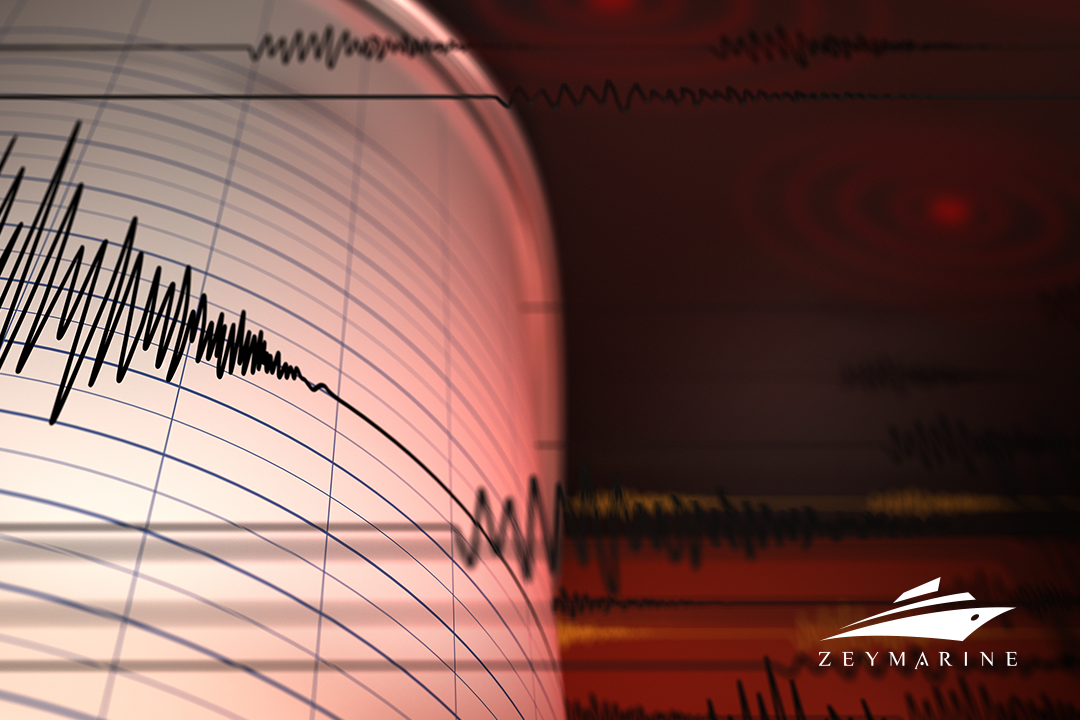In the early hours of February 6, 2023, a devastating Mw 7.8 earthquake strikes Turkey and Syria. The first, the strongest earthquake in Turkey since the Erzincan earthquake in 1939, is followed by a second tragedy. Nine hours later, a magnitude 7.7 earthquake took place. More than 45,000 lives were lost, and many more were injured. We feel immense pain.
Maritime is also affected by earthquakes. The tragedy on 6 February left its mark on maritime but still, there are some suspicious areas leaning to be struck by an earthquake. In this article, we discuss earthquakes from the viewpoint of maritime.
Turkey and Earthquake Risks
Earthquakes are not unexpected, especially in Turkey. The Anatolian plate is stepping away from the grasp of the converging Arabian and Eurasian plates and migrating westward. On the top and bottom, Anatolia is limited by the right-lateral and left-lateral pairs of the North Anatolian Fault (NAF) and East Anatolian Fault (EAF) where the 6 February earthquake occurred.
The North Anatolian Fault is a major transform fault formed by the sliding of two tectonic plates. It is almost the same size as the San Andreas Fault. Both are also close to a continental margin (Black Sea and Pacific Ocean). Also, it has the potential to cause damage to shake all of İstanbul.
The North Anatolian Fault has ruptured in a series of devastating earthquakes that have propagated from east to west over the past 60 years. The only substantial gap along the North Anatolian Fault is the Marmara Sea.
In essence, scientists are certain of the location of the next big earthquake. Although we know it is unavoidable, the negative consequences can be mitigated with precautions.
Tsunami Risk on the Marmara Sea
A tsunami is a sequence of long-wavelength ocean waves (often several hundred kilometers) caused by large-scale ocean disruptions such as earthquakes, volcanic eruptions, or landslides. Tsunamis can travel at rates of up to 800 km/h over whole ocean basins, causing massive havoc when they reach coastal regions. Tsunamis occur in the Pacific Ocean basin about 90% of the time.
The risk of tsunami on Marmara is a doubtable question. The points of scientists’ opinions vary, however, due to some historical reports, it is possible to say that there is some kind of risk.
Ships During Earthquake
People onboard a ship can feel earthquakes and tsunamis based on their location.
A strip of the seafloor, for example, uplifts and sends a tsunami wave in two directions: toward the adjacent coast and toward the open sea. As the tsunami approaches the coast, it begins to fracture in shallow waters and can approach several meters in height. Any ship in port or close to the coast will likely experience the wave and maybe be dragged inland.
An earthquake’s seismic waves can erupt from the seafloor as an acoustic wave that travels through the ocean toward the surface and can collide with a ship. The ship will be forcefully rocked if the sound is strong enough. These are known as seaquakes. Seaquakes can be so intense that individuals on board assume they have hit land.
Although people onboard are likely to experience the effects of an earthquake, ship damages are relatively rare. Being on a ship during an earthquake and its subsequent effects is generally safe. Ships are really significantly safer on open waters in the event of a tsunami following an earthquake.
The energy in a tsunami is dispersed across its very long wavelength in open water. While a ship at sea may not feel a tsunami, the repercussions on ships in port when a tsunami hits can be disastrous. Because the force stacks the wave as it advances into shallow water.
How the 6 February Earthquake Affected Maritime?
The disastrous earthquake in Turkey, which has damaged the country’s port facilities, is anticipated to have a major impact and cause uncertainty in global trade due to Turkey’s key “fortress position,” analysts stated.
Following the earthquake, a fire occurred on hundreds of shipping containers at Turkey’s Iskenderun Port. Since the earthquake that struck the Iskenderun Port on February 6, operations were temporarily suspended. The majority of the containers had been knocked over, twisted, or slipped as a result of the earthquake’s extreme shaking.
According to sources, the fire was completely extinguished on February 13. The cooling process is complete and the containers that fell during the earthquake will have their damage condition assessed separately. Also, it is stated that approximately 1,730 containers have completely burned down with their loads.
Iskenderun Port is one of two major container hubs on Turkey’s southeast coast and relies on mostly domestic trade.








